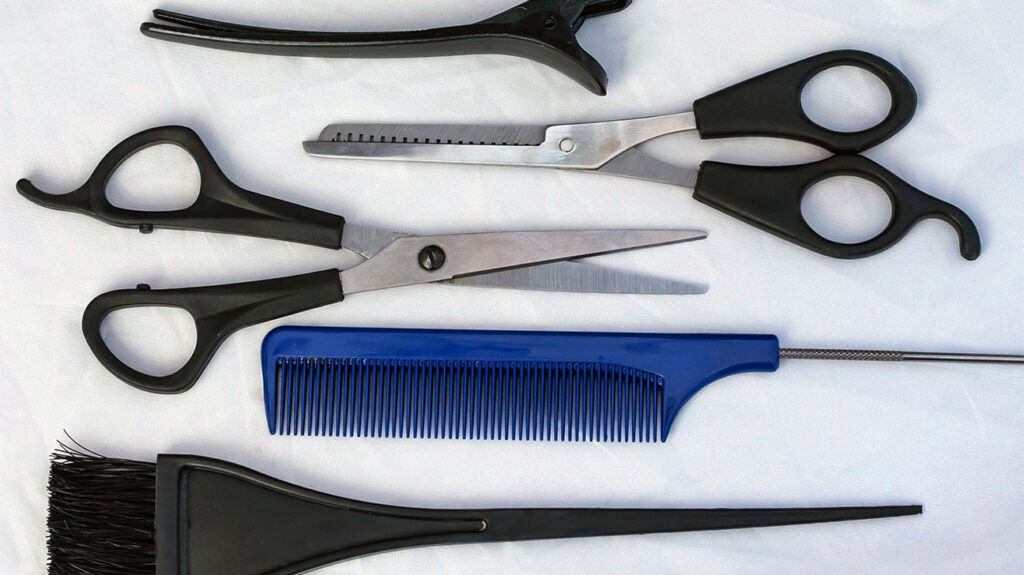A person who has trichophobia has an intense and irrational fear of hair. This condition can lead to distressing symptoms and avoidance behaviors. Even though trichophobia is an uncommon phobia, it can significantly impact an individual’s quality of life.
Trichophobia is a rare and complicated phobia in which a person has a strong fear of hair, such as an apprehension of hair on the head. However, it more commonly involves encounters of loose strands that have fallen onto clothing, the body, furniture, or any other surface. This fear can lead to several symptoms that can disrupt everyday life.
In this article, we will examine trichophobia, its symptoms, causes, treatment, outlook, and prevention, which are crucial in managing it effectively.

Trichophobia derives from the Greek word “tricho,” meaning hair. It is a specific phobia that
A specific phobia is an intense, irrational fear of something that poses little or no actual danger. Approximately
People with trichophobia may experience extreme discomfort or panic when they see hair,
Learn more about phobias.
Symptoms of trichophobia can vary in intensity from person to person but may include:
- intense fear or anxiety during exposure to hair or situations involving hair
- avoidance of places, people, or activities where hair may be present
- difficulty concentrating or functioning normally due to preoccupation with avoiding hair
- nausea, dizziness, or fainting
- difficulty breathing, chest tightness, or fast heartbeat
- sweating, trembling, or other signs of panic when encountering hair
If an individual experiences symptoms of trichophobia that cause significant distress or interfere with daily life, it is essential to seek help from a qualified healthcare professional. A doctor or mental health specialist can provide an accurate diagnosis and recommend appropriate treatment options to alleviate symptoms and improve overall well-being.
If a phobia prevents an individual from seeking help, they may wish to:
- book a different type of appointment
- ask someone they trust to help
- prepare what to say in advance
The exact cause of trichophobia is not fully understood, but as with other specific phobias, it is likely due to a combination of genetic, environmental, and psychological factors. Traumatic experiences
Additionally, if an individual experiences anxiety or other mental health conditions, it may increase the risk of developing this phobia.
Trichophobia can have a significant effect on an individual’s life if they do not seek treatment. This can lead to complications, such as:
- social isolation
- difficulty maintaining relationships
- an impairment in performance at school or work
Avoidance behaviors that may occur with trichophobia can also prevent individuals from seeking necessary medical care or participating in essential activities, further exacerbating health and quality of life issues.
Fortunately, trichophobia is a treatable condition, and several therapeutic approaches are effective in managing symptoms. Treatment options may include:
- Cognitive behavioral therapy: Cognitive behavioral therapy (CBT) is a type of psychotherapy that can help individuals identify and challenge irrational thoughts and beliefs that may cause their fear of hair. Through exposure and response prevention (ERP) and relaxation techniques, individuals
can learn to manage their fears and develop coping strategies to reduce anxiety. - Medication: For some people, doctors may prescribe medications, such as beta-blockers, antidepressants, or tranquilizers to help alleviate symptoms of trichophobia. Individuals can use these medications in conjunction with therapy or as a short-term solution to manage acute anxiety symptoms.
With appropriate treatment and support, many individuals with trichophobia can experience significant improvement in their symptoms and overall quality of life. It is essential to seek help from a qualified mental health professional to develop a customized treatment plan for an individual’s needs and circumstances.
While it may not be possible to prevent trichophobia entirely, early intervention and addressing underlying causes can help mitigate the development or severity of symptoms. Encouraging open communication about fears and providing support to individuals with anxiety or phobias can also contribute to better outcomes and resilience against future challenges.
Living with trichophobia can be challenging, but there are several strategies individuals can use to cope with fears and minimize their impact on daily life:
- Education: Learning more about trichophobia and its causes can help demystify the condition and reduce feelings of isolation or shame.
- Practice relaxation techniques: Techniques, such as deep breathing, progressive muscle relaxation, and mindfulness meditation can help alleviate anxiety symptoms and promote a sense of calm.
- Seek support: Joining a support group or connecting with others with similar experiences can provide validation, encouragement, and practical coping strategies.
- Gradual exposure: Exposure to hair-related stimuli in a controlled manner, with the support of a therapist or trusted friend, can help desensitize a person to their fears over time.
- Stay active: Regular physical activity and a healthy lifestyle can help reduce stress and improve overall well-being.
Trichophobia is an irrational fear of hair that can significantly impact an individual’s daily life and well-being. Symptoms may include intense anxiety, avoidance behaviors, and physical reactions when a person with trichophobia encounters hair.
However, with proper diagnosis and treatment, including cognitive behavioral therapy and medication when necessary, individuals can learn to manage their fears effectively and lead fulfilling lives. Seeking support from qualified mental health professionals and utilizing coping strategies, such as relaxation techniques and gradual exposure, can help individuals overcome trichophobia and regain control over their lives.
